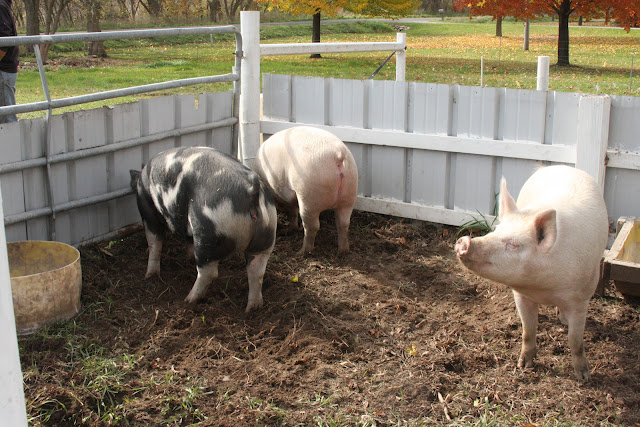I am often asked about my personal care products. People are curious what I use and why. When I started down the path to more natural body care, Antiperspirant was one of the first products I tackled (I'm still in the process of figuring out other products). Why Antiperspirant? Well, I had two major motivators.
First, it occurred to me one day, as I thought about the function of our skin, that the skin is one of the body's foremost agents of detoxification. Ever noticed how your skin smells like garlic if you eat a lot of it? Or how you can smell a drunk person a mile away? Your skin helps your body rid itself of impurities. It seemed odd to me that I would willingly slather Antiperspirant on each day, trapping in bacteria and toxins that my body was desperately trying to expel. What happens when we clog those pores day after day? Who knows...
Second, I found several sources indicating that high levels of aluminum in the body are linked to Alzheimer's disease. Aluminum is often found in pots and pans, cooking utensils, some baking powders and you guessed it, Antiperspirant. There have also been several studies linking aluminum with breast cancer. Whether or not these studies are accurate, I'm not keen on being anyone's guniea pig. After thinking long and hard, weighing my options, I decided that being slightly less sweaty (I never did find an Antiperspirant that was effective for me) was not worth the potential risks.
So I took the plunge. I stopped using Antiperspirant and switched to a "natural" deodorant (deodorants simply make you smell better, they don't keep you from sweating). And.... my arm pits sweat like there was no tomorrow. A monsoon. It's almost like I had 20 years of sweat and grossness piled up in those pores. Oh wait, I did. It made me want to go running back to the Antiperspirant, but I realized my body was simply detoxing itself. I gritted my teeth and kept my arms low for a few days. Lo and behold, within a week or so, the sweating slowed down...the odor lessened... and I felt fresh and clean, cleaner than I had felt in years. My arm pits breathed a sigh of relief.
Unfortunately, I was none too thrilled with the store bought "natural" deodorant. It did a nice job eliminating any odors, but it made me feel slimy, or as my husband says "swampy". Not a good feeling. After some trial and error (and many tubes of deodorant from the store), I stumbled upon this homemade deodorant recipe. By golly, it worked for me!
I have been using this recipe for the past 2 years and I love it. For a year, I kept a tube of Antiperspirant in the bathroom "just in case", but I found it completely unnecessary. No longer do I have arm pits full of white, gunky stuff. No more ruined shirts. I tossed it in the trash and have never looked back.
I can't guarantee this recipe will work for you, since we all have a different body chemistry, but it might be worth a shot and it's MUCH cheaper than store bought deodorants. Here is what you need:
1. Make sure the coconut oil is soft, but not melted. Coconut oil is a solid below about 76 degrees. Above that temperature, it turns to liquid. You want the oil to be right around 75 degrees or so. You may need to warm it (stick the bottle in warm water) or cool it (in the fridge), depending on the temperature of your house.
2. Place all of the ingredients in a cup or bowl. Stir to mix well.
3. Pour the mixture into your container of choice. I like to reuse an old deodorant tube. This recipes makes almost exactly the right amount to refill a tube. Or you could pour it into a small jar. To apply the deodorant from the jar, simply dip your finger into the container (or scrape some off with your thumbnail if the deodorant is cold) and massage into your armpits.
4. Since coconut oil melts at 76 degrees, you will need to keep the deodorant in the fridge during the summer. I know, that seems really weird. It is. But chilled deodorant on a hot summer day is a simple pleasure! I keep mine right next to my coffee cream, so I see it every morning and don't forget to put it on.
*I like to use arrowroot powder instead of cornstarch. The cornstarch gave me a mild rash. You can find arrowroot powder at a health food store in the baking aisle.
*My essential oil of choice is Tea Tree Oil. It smells fresh and clean, with the bonus of being highly anti-bacterial.
Remember, one of your skin's roles is to detox the body and remove impurities. If you are eating lots of processed junk foods, you might smell, well... junky. You are what you eat. I wonder how much of our "body odor" is actually diet related. Try switching to "clean foods" and see if your body starts feeling and smelling clean too!
If this all sounds like too much work, you can take the route my husband does. I bought him a large cosmetic powder brush and dumped some baking soda into a small jar. After he showers, he dips the brush in the powder and dusts the baking soda on his damp arm pits. Works great for him. Or you could just do nothing - no deodorant, so baking soda, nada. I end up doing that more often than not, when I forget to put on my deodorant in the morning!
Have you tried giving up Antiperspirant? What worked for you?!?


























